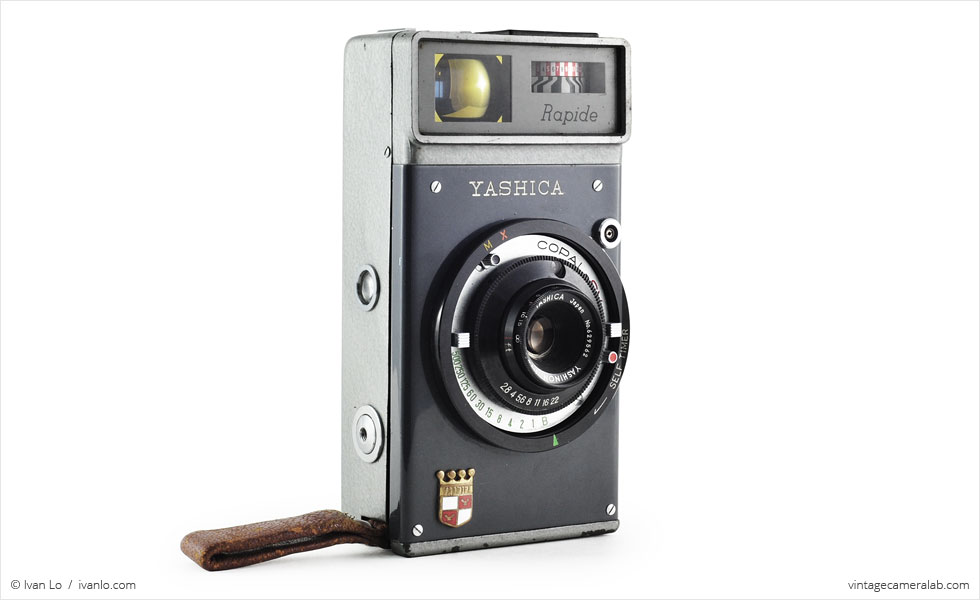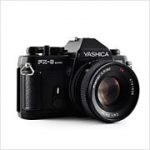Yashica Rapide Specifications
| Manufacturer: | Yashica Company, Ltd |
| Origin: | Japan |
| Made in: | Japan |
| Introduced: | 1961 |
| Type: | Subminiature, Viewfinder |
| Format: | 135 Film (half-frame) |
| Dimensions: | 7.5 x 13.5 x 5.5 cm |
Yashica Rapide Overview
The Yashica Rapide (also sold as the “Rapid”) is a vertically oriented 35mm half-frame camera introduced by Yashica in 1961. The launch of the unusually styled Rapide completed Yashica’s entrance into all segments of that era’s consumer camera market with the exception of medium format SLRs. The only other camera that I know of that looks like the Rapide is the Taron Chic. However, since they were both introduced in 1961, it’s unclear as to who copied who or if there was indeed any intentional copying at all.
Like all cameras, the focal point of the Rapide is its lens: a Yashinon 28mm f/2.8 in this case. Focus is tuned by rotating the ring directly surrounding the front element with distance scales in feet at nine o’clock and meters at three o’clock. Aperture is selected by turning the black ring at the base of the focus ring by lining up the desired aperture with the green arrow at 5:30. The same green arrow is used to indicate the shutter speed (1-1/500 seconds and Bulb) which can be adjusted by using the two rectangular metal posts (located at the nine and three o’clock marks in the photos above) to rotate the silver ring with “COPAL-SV” (the name of the shutter type) written on it. A self timer can be found at 3:30 and a sync mode selector at 11 o’clock which can be flipped to “X” when an external flash unit is plugged into the sync socket located just outside of the lens barrel at the 2:00 position.
With its vertical design, the Rapide’s dimensions are comparable to that of a pocket transistor radio typical of the time period. A cold shoe and selenium light meter sensor can be found on the top plate just above the viewfinder and a light meter reading window (from the front) that also functions as a film speed selector (viewable from the back). On the user’s right-hand side of the camera are a frame counter, shutter button with threaded socket for a cable release, and a leather strap which, when yanked downward, cocks the shutter. On the opposite side of the camera is a film rewind release button, tripod socket, a film rewind knob, and a small metal tab which releases the film door.
I had been watching eBay auctions for Yashica Rapides for nearly two years when I finally stumbled upon a fresh listing with an absurdly low “buy it now” price of $49. Since they usually sell for at least $100, I jumped at the chance and bought it right away. It’s no secret that I like unusual looking cameras and have a soft spot for half–frame cameras. It’s no surprise then that I’m in love with the Rapide, a wondrous beauty that clearly falls into both categories.
Find your very own Yashica Rapide on eBay.
McKeown, James M. and Joan C. McKeown’s Price Guide to Antique and Classic Cameras, 2001-2002. (Grantsburg, WI, USA: Centennial Photo Service, 2001), p 706.


















